Today we have the latest in our series of 100GbE switch reviews. The FS N8560-32C is a different take on a Broadcom-based switch platform with 32 ports of 100GbE. The market for switches right now is challenging with many large vendors pushing availability well into 2023, so we are looking at different options. In our review, we are going to take a look at the switch, and give this unit a spin.
FS N8560-32C 32x 100GbE Switch Hardware Overview
As we typically do with our hardware reviews, we are going to split our hardware section into internal and external overviews.
FS N8560-32C 32x 100GbE Switch External Hardware Overview
The N8560-32C is a 1U switch, and is one of the deeper 100GbE switches we have tested. The unit measures 560mm or just over 22″ deep.
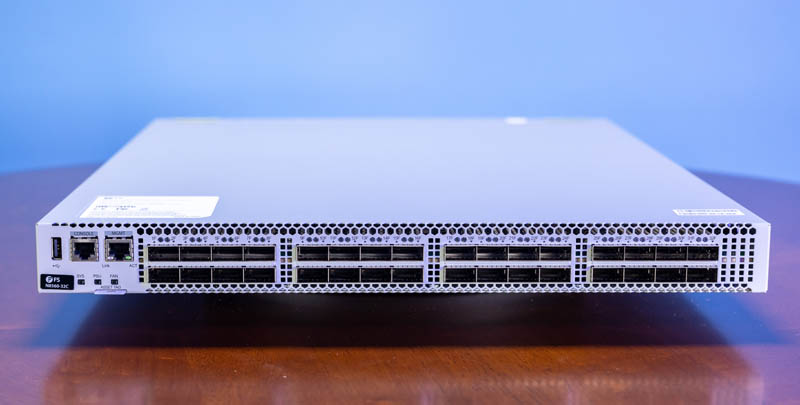
On the left side of the unit, we have a USB port for upgrades. There is a RJ45 console port and then a management port. This is a fairly standard layout and we prefer the management interfaces to be on the same side as the switch ports.
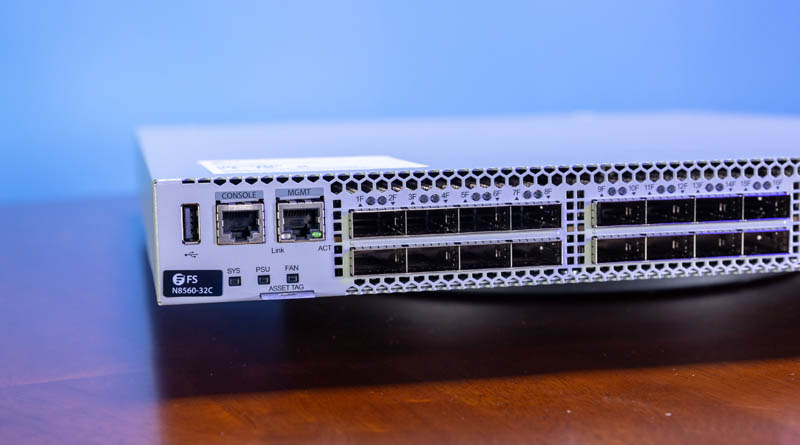
There are a total of 32x QSFP28 100GbE ports on the switch. As with many switches in this class, there are perforations all along the front of the switch to provide the necessary airflow to keep the switch chip and the optics cool.
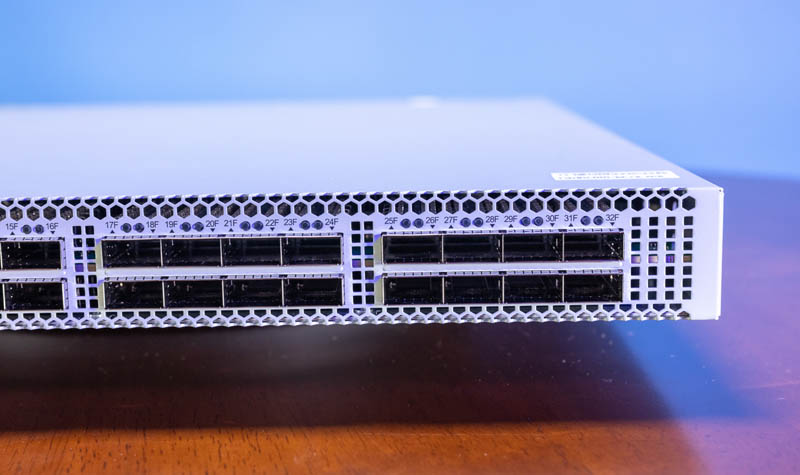
The rear of the switch is dedicated to that airflow, made up of fans and power supplies.
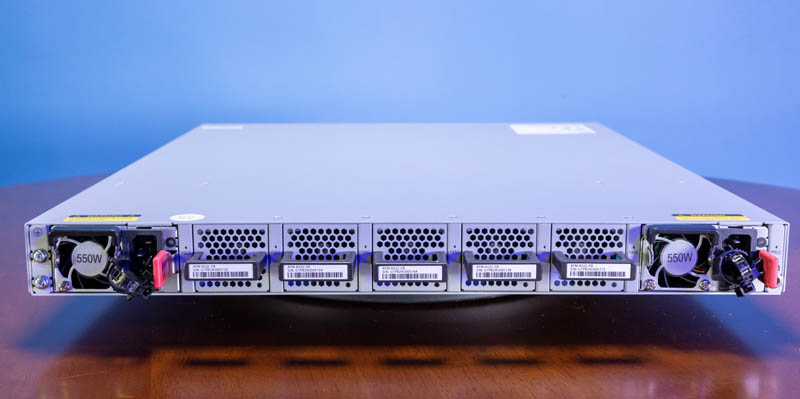
The fan modules are dual-fan modules on a hot-swap carrier sled. Something we would have liked to see is that the handles adopt industry-standard coloring of red for the direction of the airflow, like the PSUs. There are a total of five of these redundant fan modules in the switch.

The power supplies exhaust to the rear and thus have red tabs on them (red for hot.) These are 550W units. It would have been nice to see some efficiency rating like “80Plus Platinum” or some indication of efficiency on the PSUs. For many organizations, this is becoming required as part of sustainability efforts with companies specifically looking for all gear to be rated with 80Plus Gold, Platinum, Titanium, or so forth as a minimum spec for IT equipment.
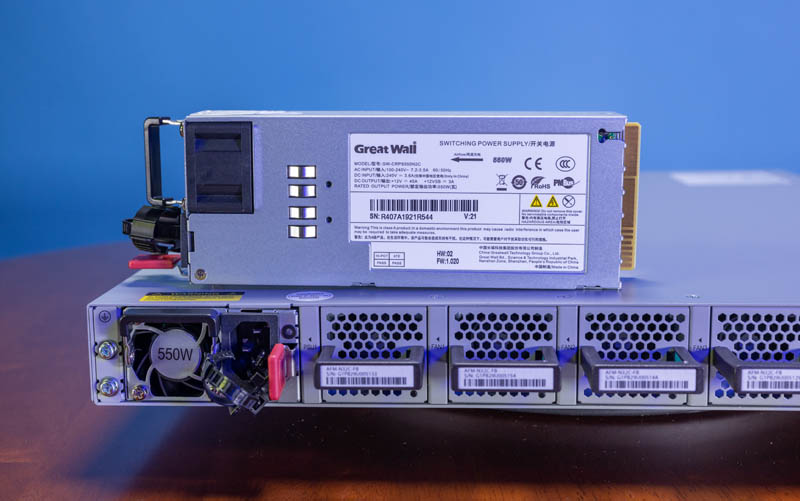
Overall, this is a fairly standard layout for a 32x 100GbE switch. Let us get inside to see where the bigger differences happen.
Next, we are going to open the switch and get to the internal hardware overview.

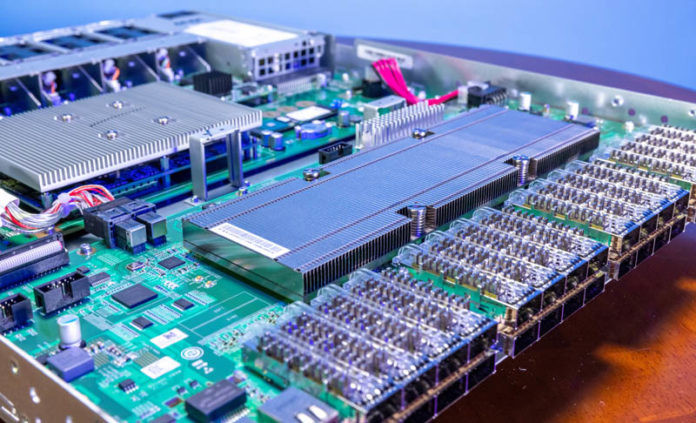
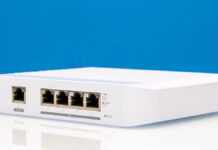
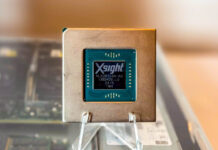
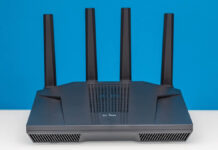
I’m with you. Why didn’t they make the handles read for port to power airflow?
I’m more worried about the lack of NRTL marks (UL, Intertek, etc) on the power supply! I’d imagine that might be a good reason why they don’t have 80+ rating.
I’d imagine that most colos require those marks for any equipment you bring in, too- I know the handful I’ve worked with do.
The FS switches I’ve bought (S5860-20SQ) have been rock solid for nearly 2 years at this point. Optics as well. Just my 2 cents. Great value for the money.
This website does make me laugh. It’s called Serve the Home but here we are reviewing a 32 x 100Gbe switch! How many home users have this kind of gear?!
FYI- on page 2 in the CLI section it cuts off between the screen shots:
“The CLI is fairly standard, but it is something that”
John R: some of us do, at least. Used 100G switches were actually pretty cheap for a brief while, before the supply chain mess hit.
@John R: …How many home users have this kind of gear?!…
I concur, but it’s not 0%.
I’m using a 36-ports FDR (56Gbps) switch equivalent to ~35 to 45GbE(*). Extremely useful for SMB, VM, database, large files over the Intranet. Due to to the supply chain SNAFU, used 100GbE is too expensive at the moment.
(*) used IB hardware is anyway and still less expensive than brand new “prosumer” 10 GbE.
STH forum is an excellent source of support information when you use this type of hardware at home :-)
Would love to see them support ONIE for SONiC etc.
Also what is three-layer sub-interface to VxLAN is that layer-3 sub-interface to VxLAN support? or do they support some form of triple vLAN tagging.